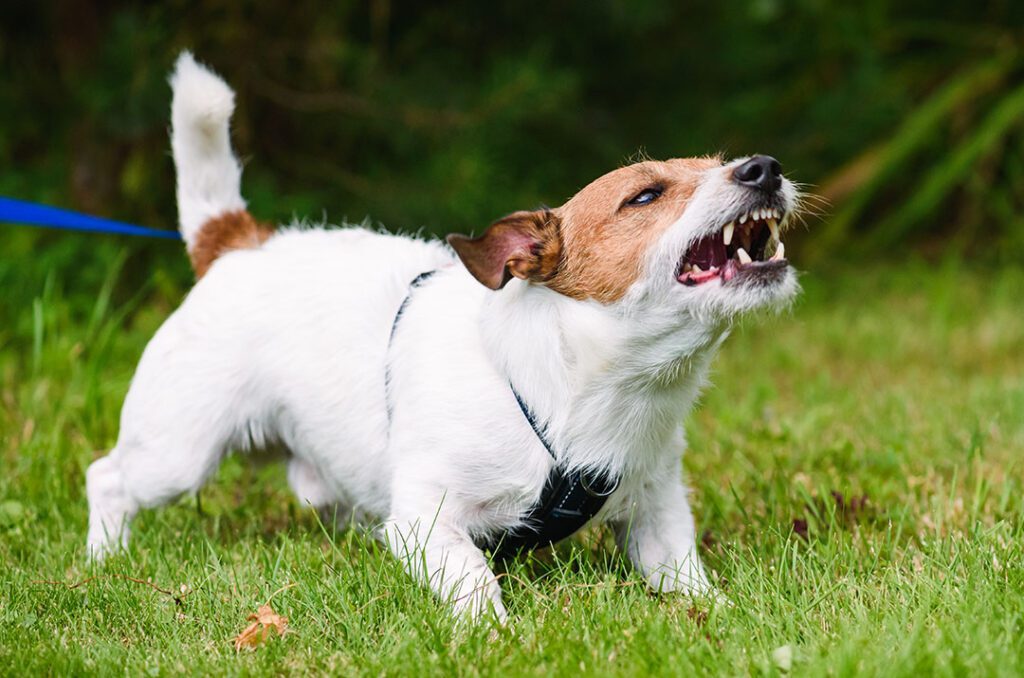
Encountering a growling dog can be a frightening experience for anyone, whether you’re a dog owner or not. Growling is a natural way for dogs to communicate their discomfort, fear, or aggression. As responsible individuals, it’s crucial to know how to handle such situations to prevent potential harm to both humans and dogs. In this blog post, we will explore the dos and don’ts when dealing with growling dogs, equipping you with the knowledge to ensure a safer encounter.
1. DO Understand Why Dogs Growl:
Growling is a form of communication used by dogs to express various emotions. It can signal fear, discomfort, pain, or a warning that they feel threatened. Recognizing the reasons behind a dog’s growling is vital to respond appropriately and avoid escalating the situation. If a dog is growling due to fear or discomfort, giving them space and time to calm down is essential.
2. DO Remain Calm and Avoid Eye Contact:
When faced with a growling dog, it’s crucial to stay calm and composed. Dogs are highly intuitive creatures and can sense fear or anxiety, which might further agitate them. Additionally, avoid direct eye contact, as dogs may perceive it as a challenge or threat. Instead, keep your gaze soft (not “bug eyed”) and avert your eyes slightly.
3. DO Give the Dog Space:
One of the most important things you can do when encountering a growling dog is to give them plenty of space. Back away slowly and avoid making sudden movements. This allows the dog to feel less threatened and can prevent them from feeling cornered, which may escalate their defensive behavior.
4. DO Speak Softly and Use a Neutral Tone:
While it’s essential to remain calm, you can also use your voice to help defuse the situation. Speak softly and use a neutral tone to show the dog that you mean no harm. Avoid yelling, as it can exacerbate the dog’s anxiety or aggression.
5. DO Allow the Dog to Approach You:
If the dog shows signs of curiosity after you’ve given them space, you can extend your closed hand toward them, allowing them to sniff and approach you on their terms. This non-threatening gesture can help build trust between you and the dog.
6. DO Consult a Professional:
If you encounter a growling dog in your neighborhood regularly or are dealing with a dog exhibiting aggressive behavior, it’s best to seek assistance from a professional dog trainer or behaviorist. They can provide guidance and implement techniques to address the underlying issues safely.
1. DON’T Punish or Approach Aggressively:
Punishing a growling dog can reinforce negative behavior and escalate their aggression. Likewise, approaching an aggressive dog head-on can be dangerous and trigger a defensive response. Always allow the dog to approach you if they choose to.
2. DON’T Run Away or Scream:
As tempting as it may be to flee from a growling dog, running away can trigger their chase instinct. Avoid screaming or making loud noises as well, as this can escalate the dog’s agitation.
3. DON’T Reach Over a Dog’s Head:
Reaching over a dog’s head can be perceived as a threatening gesture, especially by unfamiliar dogs. Instead, if you wish to pet a dog, offer your hand to the side so they can approach and sniff it first, then pet under the chin/chest area.
4. DON’T Leave Children Unsupervised:
Children should never be left unsupervised with dogs, especially if the dog has exhibited any signs of aggression or discomfort in the past. Teaching children how to approach and interact with dogs safely is essential for their safety and the well-being of the dog.
5. DON’T Corner the Dog:
Avoid cornering a growling dog, as this can escalate their anxiety and trigger defensive behaviors. Always provide an escape route, allowing the dog to move away if they feel uncomfortable.
Encountering a growling dog can be intimidating, but knowing how to respond can make all the difference in ensuring a safe outcome for both you and the dog. Understanding the reasons behind their behavior, staying calm, and giving them space are fundamental principles to remember. Moreover, seeking assistance from a professional if needed is never a sign of weakness but rather a responsible approach to addressing any behavioral concerns. By following the dos and don’ts outlined in this blog post, you can be better prepared to handle growling dogs with confidence and empathy.

